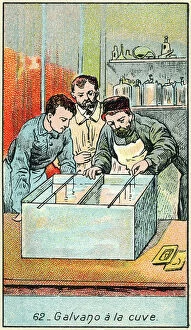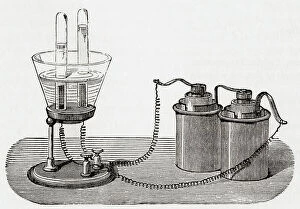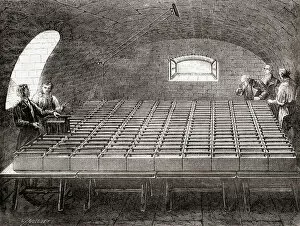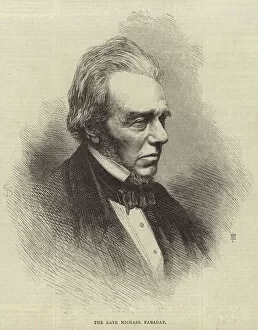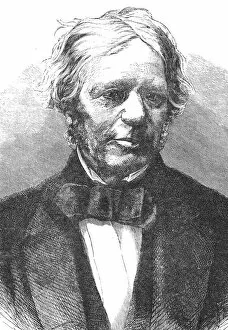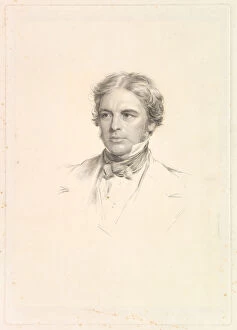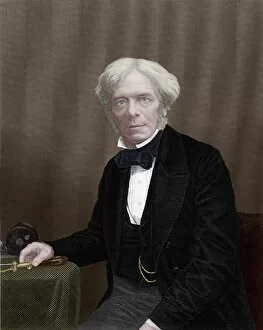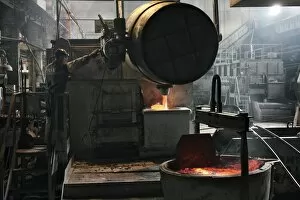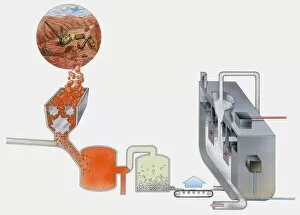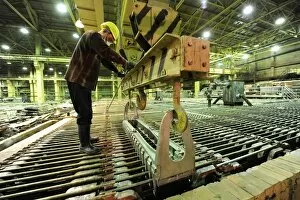Electrolysis Collection
Electrolysis, a groundbreaking scientific discovery pioneered by Michael Faraday in the 19th century
All Professionally Made to Order for Quick Shipping
Electrolysis, a groundbreaking scientific discovery pioneered by Michael Faraday in the 19th century, revolutionized our understanding of electricity and its applications. Through his meticulous experiments and observations, Faraday established the fundamental law of electrolysis, forever changing the course of science. In this colored engraving from the 19th century, we see a depiction of Michael Faraday himself diligently working in his laboratory. His unwavering dedication to unraveling the mysteries is evident as he meticulously conducts experiments with various substances. One significant application is demonstrated through the process known as "electrolysis of water. " This technique allows for the separation of water into its constituent elements: hydrogen and oxygen gases. This breakthrough not only deepened our knowledge about chemical reactions but also paved the way for advancements in fuel cells and renewable energy technologies. Moritz von Jacobi and Richard Elkington were among those who furthered Faraday's work on electrolysis. Their contributions expanded its practical applications beyond scientific curiosity to include electroplating techniques used in industries such as jewelry making and metal finishing. Faraday's remarkable achievements earned him recognition as one of history's greatest scientists. As an English scientist at The Royal Institution, he made invaluable contributions to our understanding of electricity, magnetism, and chemistry. His discoveries laid down foundations that continue to shape modern science today. This engraving from Les Merveilles de la Science published in 1870 showcases The Royal Institution electric battery—an apparatus that played a crucial role in many early electrical experiments conducted by Faraday himself. It symbolizes both his ingenuity and determination to push boundaries within this field. Beyond scientific realms, it has found its place even within beauty culture—a treatment room captured here in black-and-white photography at a West End beauty shop exemplifies how it has become an integral part of modern aesthetic practices. Electrolysis offers permanent hair removal solutions sought after by many individuals, showcasing the practical applications of this scientific breakthrough.



